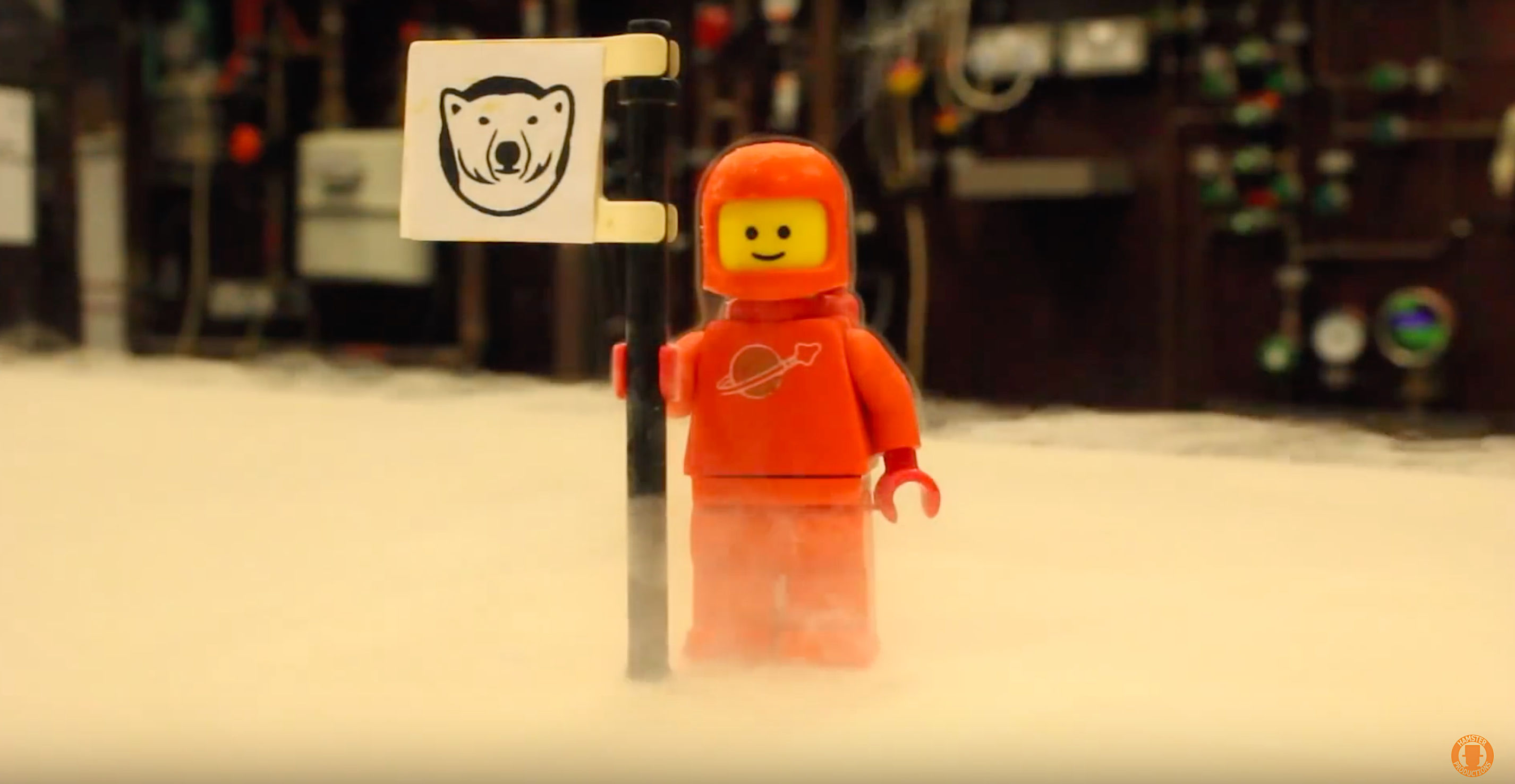Create a free profile to get unlimited access to exclusive videos, sweepstakes, and more!
Scientists freeze LEGOs near absolute zero & make a stone cold discovery

Spend enough time with LEGOs and almost inevitably, your thoughts grow more ambitious than simply cobbling together a cool, multi-colored space hangar that’s sized to fit snugly on a tabletop. As thousands of dedicated fans (and the company itself) have demonstrated over the years, there’s a lot of ambitious stuff — stuff that borders on semi-permanent construction — that those little blocky bricks can accomplish.
Such was the case for a group of scientists (and evident LEGO lovers) at the UK’s Lancaster University, where someone got the cool idea to see what would happen if they chilled the plastic pieces all the way down the lowest temperature that their lab could create: absolute zero, or at least a hair’s breadth away.
Using their specially-made dilution refrigerator — a machine “capable of reaching 1.6 millidegrees above absolute zero (minus 273.15 Centigrade),” the team, led by Low Temperature Physicist Dr. Dmitry Zmeev, put the coldest of crunches on the tiny toys. As the in-depth video below shows, the results were pleasantly surprising:
The mini-fig and quartet of LEGO blocks that went into the deep freeze passed their test with flying primary colors, and even cracked open a new batch of insights into how the toys’ structural and material properties might actually be useful in real-world construction applications — particularly in the lab, where machines like the team’s dilution refrigerator have to perform reliably at the extreme end of the thermometer.”It turns out that LEGO is an incredibly good insulator at low temperatures, particularly for its strength…this could be incredibly useful for scientists who are trying to build the next generation of dilution refrigerators,” Joshua Chawner, team member and Ph.D Student , explains in the clip. In a detailed paper published in the journal Scientific Reports, Chawner and the rest of the team also noted the bricks’ high area of surface-to-surface contact only bolsters their “extremely low thermal conductivity” while losing no significant structural integrity.
While the researchers don’t address the possibilities of building more entertaining cold-climate structures out of LEGOs, we’re taking the test results as an unspoken endorsement that, the next time we get the urge to go outside and make ourselves a melt-proof ice castle or igloo, at least we won't have to worry about the roof caving in.


























